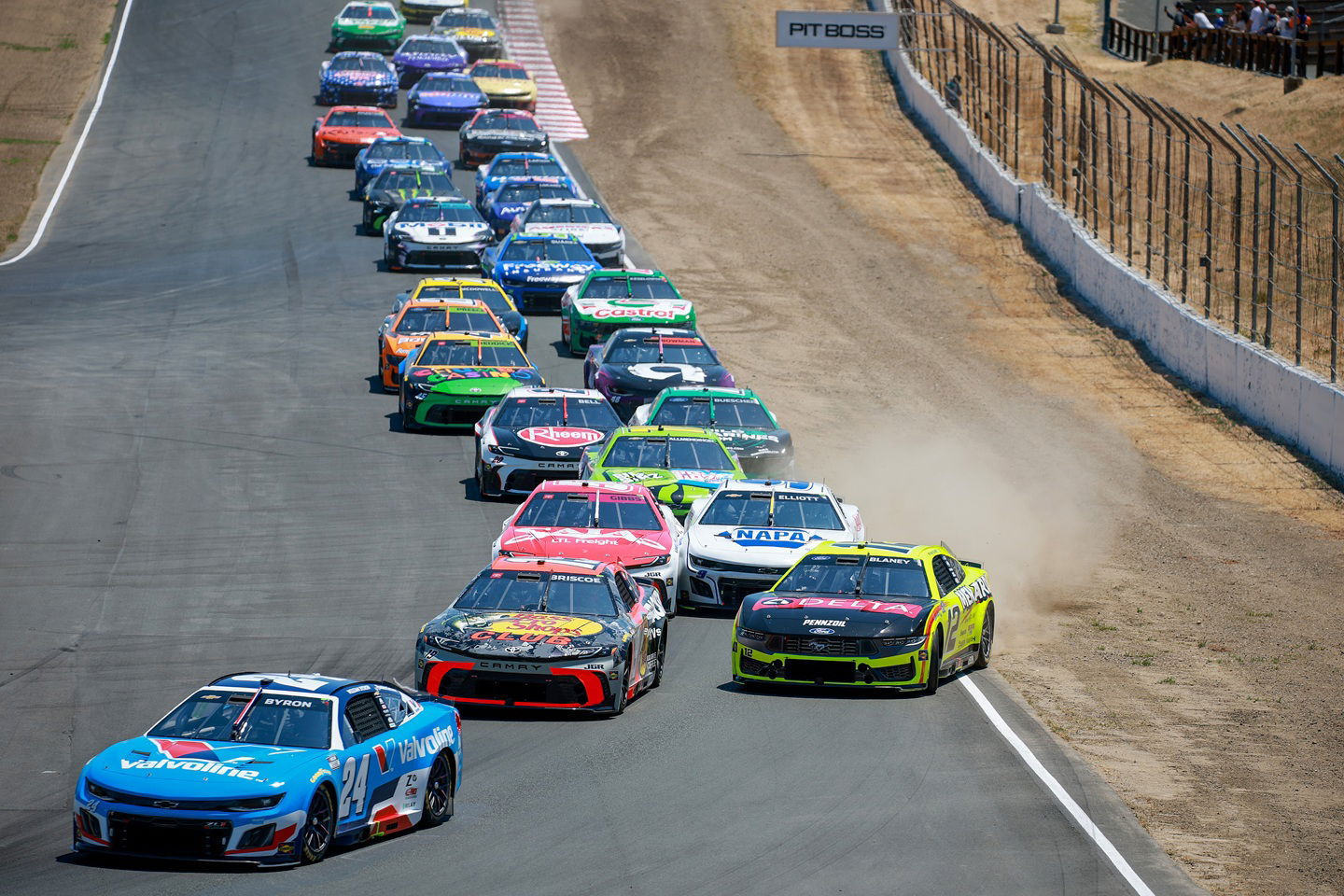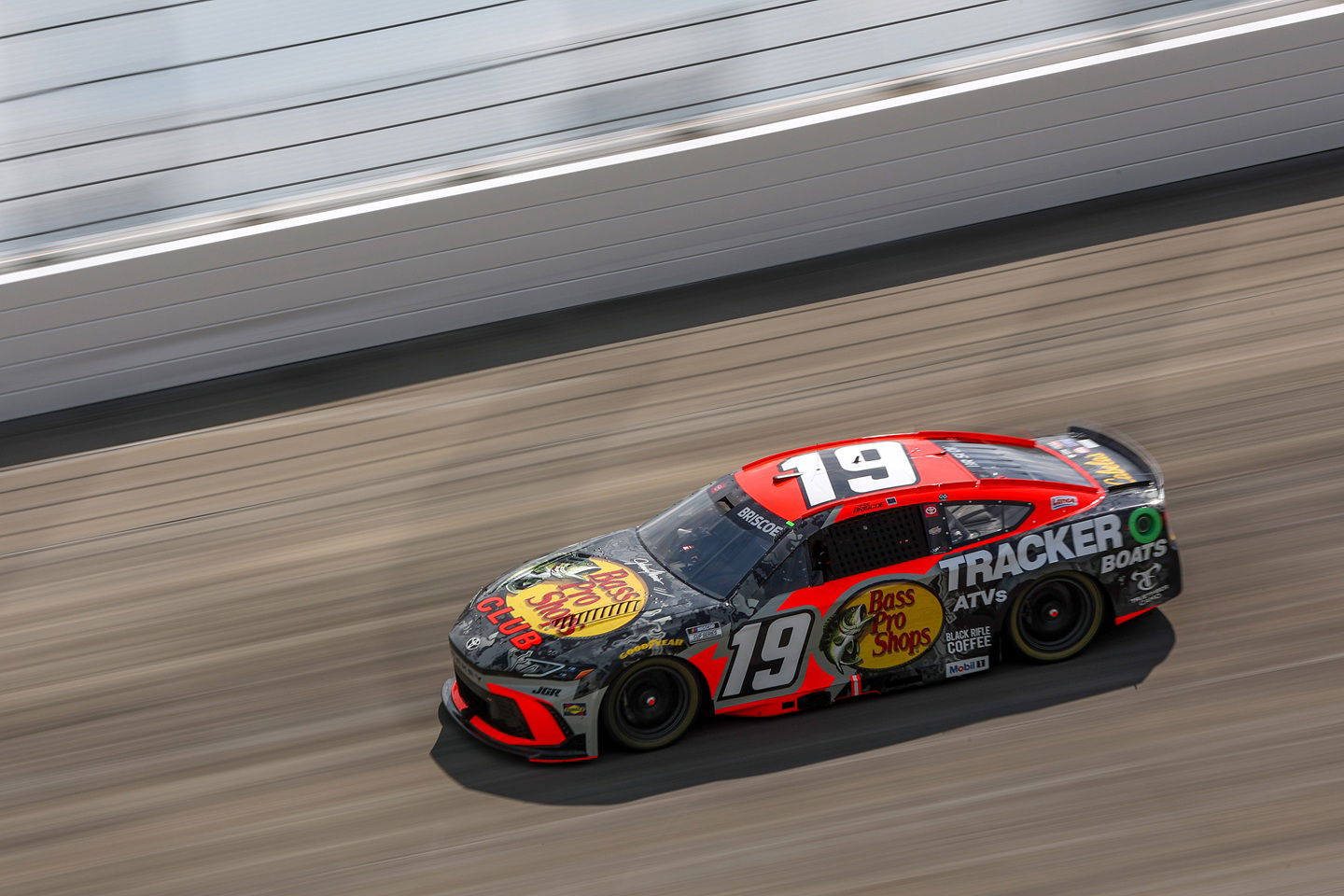Back-to-back at Dover: How Denny Hamlin transformed a weakness into a strength
Denny Hamlin is now a three-time race winner at Dover, a track that was previous his achilles heel.

Denny Hamlin has detailed how he turned one of his weakest tracks into a winning stronghold after claiming back-to-back NASCAR Cup Series victories at Dover.
The Joe Gibbs driver cycled to the lead in Sunday’s race with 67 laps to go when Hendrick Motorsports rival Chase Elliott headed to the pits under a caution period
After nearly an hour-long red flag due to rain, Hamlin withstood intense pressure from his teammate Chase Briscoe during the two overtime restarts to take the chequered flag by a winning margin of just 0.310s.
Hamlin had a poor track record at Dover for much of his career, having finished outside the top 10 in eight out of his first 12 appearances at the one-mile oval.
But after a breakthrough victory in the COVID-affected 2020 season, which featured two races at Dover, Hamlin has now added two more wins at the venue in 2024 and ‘25.
Explaining his transformation at the track, the 44-year-old credited inspiration from Martin Truex Jr. and Jimmie Johnson, along with a shift in mentality that allowed him to better identify and address his shortcomings.
“Well, it’s twofold,” said Hamlin, who drives the No. 11 Toyota. “There’s two things. One is obviously my driving. I’ve talked about that, changing my style to more of a Martin Truex and Jimmie Johnson style.
"I just studied some of the greats here. I was very fortunate to have Martin Truex as a teammate. Jimmie Johnson, watching him win (11) times here. You learn from the greats and you change your game to match it, you have success like this.
“The other is focusing on what I need to tell the team to make the car better, identifying where I’m losing time, then focusing on what I need to tell them how I can go faster in that section of the racetrack. Just try not to get caught up too much in…
“NASCAR is an emotional game where you really kind of get caught up in shit that doesn’t matter. So I just try to look at it from a very straightforward point of view, numbers point of view.
“Find out where I’m bad, analyse what I’m doing, analyse the best, then figure out how I can go faster like them, then give that information to the team.
“It typically takes me a little bit longer to give the team the feedback that they’re needing because I like to analyse it, make sure it’s right, before I tell them. But it’s just changing my mentality on that process and how I’m doing it.”


